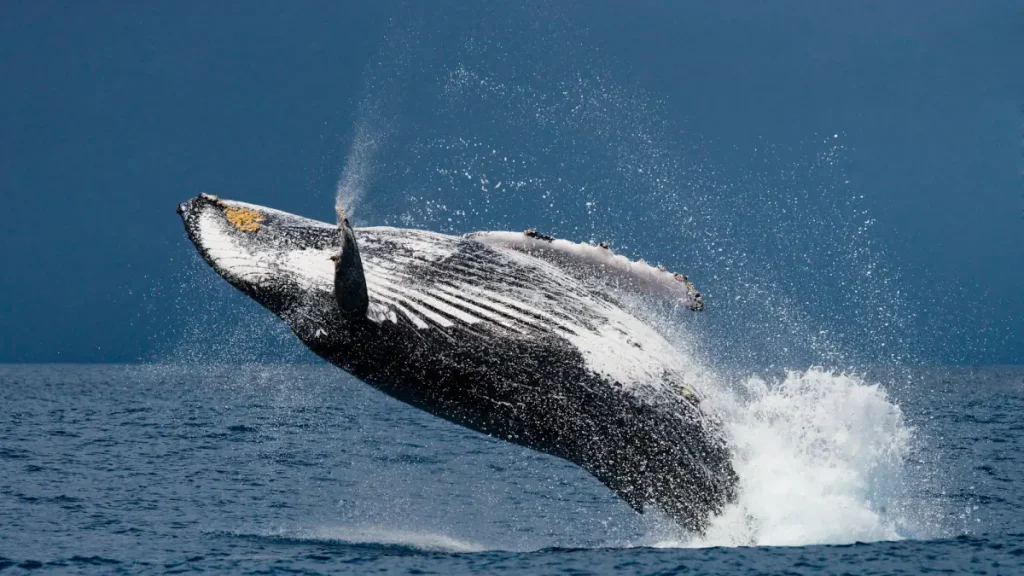Despite their larger brains, elephants and whales, while exhibiting significant intelligence, do not reach the cognitive levels of humans, whose brains are comparatively smaller. This paradoxical scenario underscores the complexity of measuring intelligence solely by brain size. In this exploration, we delve into why the larger brains of these majestic animals do not necessarily confer superior intelligence. There are nuanced factors beyond mere size – including brain structure, neuron density, and functional specialization – that contribute to the remarkable cognitive abilities seen in humans. This article aims to unravel the mysteries behind brain size and intelligence, offering insights into how diverse species have evolved distinct cognitive capabilities.

The Intriguing Complexity of Brain Size and Intelligence
The Paradox of Brain Size
The human brain, a mere 1.5 kilograms in weight (on average), is an intricate powerhouse of consciousness, dwarfed by the African bush elephant‘s brain, which is more than double its size. This comparison sets the stage for a fascinating exploration of intelligence in the animal kingdom. While it’s easy to assume that larger brains equate to higher intelligence, this is a simplistic view that fails to capture the intricacies of cognitive capabilities.
Beyond Size: The Whale Brain Conundrum
Consider the baleen whales, whose brains tip the scales at 7 kilograms, overshadowing the human brain in mass but not in complexity. Despite their impressive brain size, whales exhibit less sophisticated behavior than humans and elephants.
While they are certainly not lacking in intelligence, as evidenced by their complex communication and altruistic behavior, their cognitive abilities don’t align proportionally with their brain size. This leads us to question whether there’s more to intelligence than just the size of the brain.

Size vs. Ratio: A Misleading Metric
The brain-to-body mass ratio has often been proposed as a metric for intelligence. For instance, our brains account for about 2.5% of our body weight, a stark contrast to the minuscule 0.005% in blue whales. However, this ratio is not without flaws. It tends to be harsh on larger animals and overly generous to smaller ones.
The shrew, for example, with a brain constituting one-tenth of its body size, but not quite as intelligent as humans, even most other mammals, challenges this metric, suggesting that it might not be a reliable indicator of intelligence.

Encephalization Quotient: A Refined Approach
Scientists have developed the encephalization quotient (EQ), which compares actual brain size to the expected size for an animal of a particular weight. This metric seems to align more closely with perceived intelligence levels across species.
The Encephalization Quotient (EQ) is an advanced scientific measure designed to assess intelligence across various species by comparing an animal’s actual brain size to its expected brain size based on body weight. This approach aims to provide a more nuanced understanding of cognitive abilities than simply comparing brain sizes or brain-to-body ratios. The principle behind EQ is that a brain larger than the expected size for an animal’s body mass might indicate more neurons, suggesting the potential for greater cognitive capabilities such as problem-solving and complex social interactions.
With an EQ of 7.6, humans stand out with the highest EQ among all species, a testament to our complex cognitive functions like language, abstract thinking, and intricate social structures. This high EQ in humans correlates well with our known intellectual capabilities. Other species like the tucuxi dolphin and the manta ray also demonstrate high EQs, indicative of their significant intelligence within their ecological niches. These species exhibit behaviors that reflect higher cognitive functions, reinforcing the EQ’s relevance in measuring intelligence across different species.

However, EQ has its limitations, particularly in accurately comparing intelligence across different classes of animals. Initially based on mammalian data, the EQ may not accurately represent the cognitive abilities of non-mammalian species, such as birds and reptiles. This discrepancy arises because the EQ formula doesn’t account for variations in brain structure and function across different animal groups. For example, birds, despite their smaller brain-to-body size ratio, display behaviors indicative of high intelligence, suggesting that EQ might underestimate their cognitive capabilities.
Despite being a more sophisticated tool than previous measures, EQ still simplifies the multifaceted nature of intelligence. Intelligence is influenced by a variety of factors, including an animal’s sensory capabilities, social environment, and evolutionary adaptations, which are not fully captured by EQ. While EQ offers a valuable framework for understanding relative intelligence across species, it’s important to acknowledge its limitations and the complex nature of cognitive abilities in the animal kingdom.
The Bird Brain Fallacy
Birds, with their relatively low EQs, have often been underestimated in terms of intelligence. Yet, their cognitive abilities are remarkable, pointing to the inadequacy of EQ in fully capturing intelligence across species. This discrepancy is even more pronounced in dinosaurs, including the Tyrannosaurus rex and sauropods, whose EQ scores suggest limited intelligence, a conclusion that contradicts other evidence.

Rethinking Intelligence Metrics
The focus on overall brain mass, brain-to-body mass ratio, and EQ overlooks the fact that not all brain components contribute equally to intelligence. For instance, a significant portion of the brain mass in whales and dolphins is dedicated to insulating blubber, not cognitive processing. This realization prompts a shift in focus towards regions of the brain more directly involved in cognitive functions.
The Cerebral Cortex and Intelligence
In mammals, the cerebral cortex is associated with higher-order cognitive functions. In non-mammalian species, equivalent brain regions play a similar role. The number of cortical neurons in these areas appears to be a more reliable predictor of intelligence.
Humans, with at least 16 billion cortical neurons, are exceptional, but not the highest. Elephants, despite having a brain twice as large, have about a third as many cortical neurons.
Orcas, with 43 billion neurons, top this list, challenging our human-centric view of intelligence.
Cortical Neurons: A New Perspective
While humans rank fifth in terms of cortical neuron count (there are four species of dolphins, including orcas, with more cortical neurons), this metric offers a fresh perspective on comparing intelligence across species. It underscores the complexity and multi-dimensional nature of intelligence, suggesting that our understanding of cognitive abilities in the animal kingdom is far from complete.
Conclusion: The Limitations of Size in Measuring Intelligence
In conclusion, the notion that a larger brain automatically implies greater intelligence is a misconception. The complexities of brain structure, neuron count, and species-specific adaptations reveal a more nuanced picture. Intelligence is a multifaceted trait that cannot be encapsulated by size alone, highlighting the need for a deeper understanding of the myriad ways in which it manifests across the animal kingdom.
Going back to the original question, if an elephant’s brain is bigger than ours, why isn’t it smarter? Because the size of a brain, as we’ve seen, has little to do with intelligence. But we still don’t have a reliable method to measure intelligence, so more research is required to understand the intricate relationship between brain structure, neuron functionality, and cognitive abilities.
Intelligence is a complex, multifaceted concept that extends beyond mere brain size or neuron count. It encompasses factors such as environmental adaptation, social learning, problem-solving, and emotional intelligence, which are challenging to quantify.
Future studies need to explore these dimensions, perhaps through interdisciplinary approaches combining neurobiology, psychology, and ethology. Additionally, advancements in brain imaging and computational modeling could offer deeper insights into how different species process information and adapt to their environments, leading to a more comprehensive understanding of what intelligence truly entails in the animal kingdom.
Sources
- Encephalization quotient on Wikipedia
- Brain size on Wikipedia
- Brain–body mass ratio on Wikipedia
- How Many Elephants are Left in the World in 2025? - August 17, 2025
- Moon Landings: All-Time List [1966-2025] - February 2, 2025
- What Is Max-Q and Why Is It Important During Rocket Launches? - January 16, 2025
